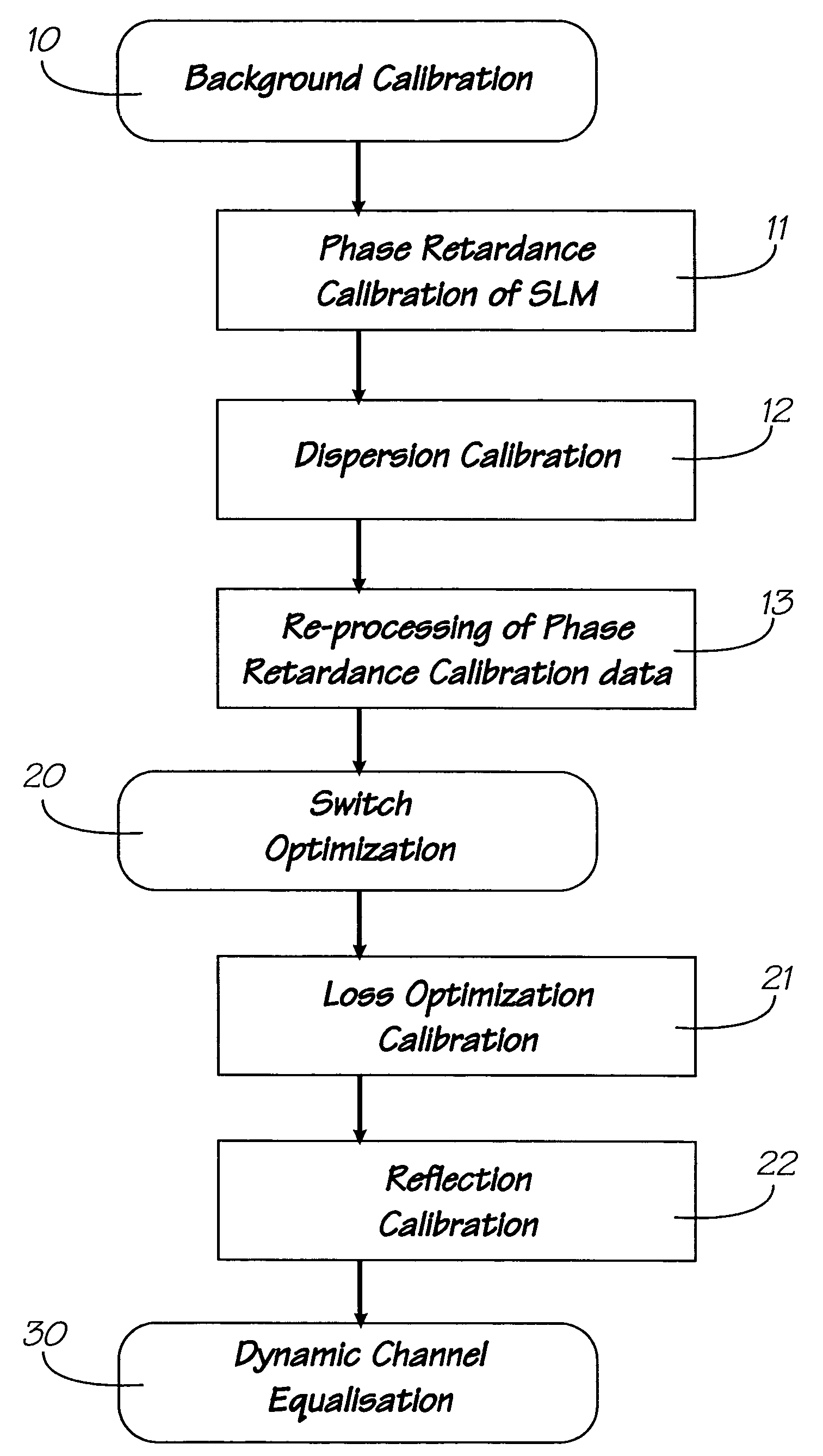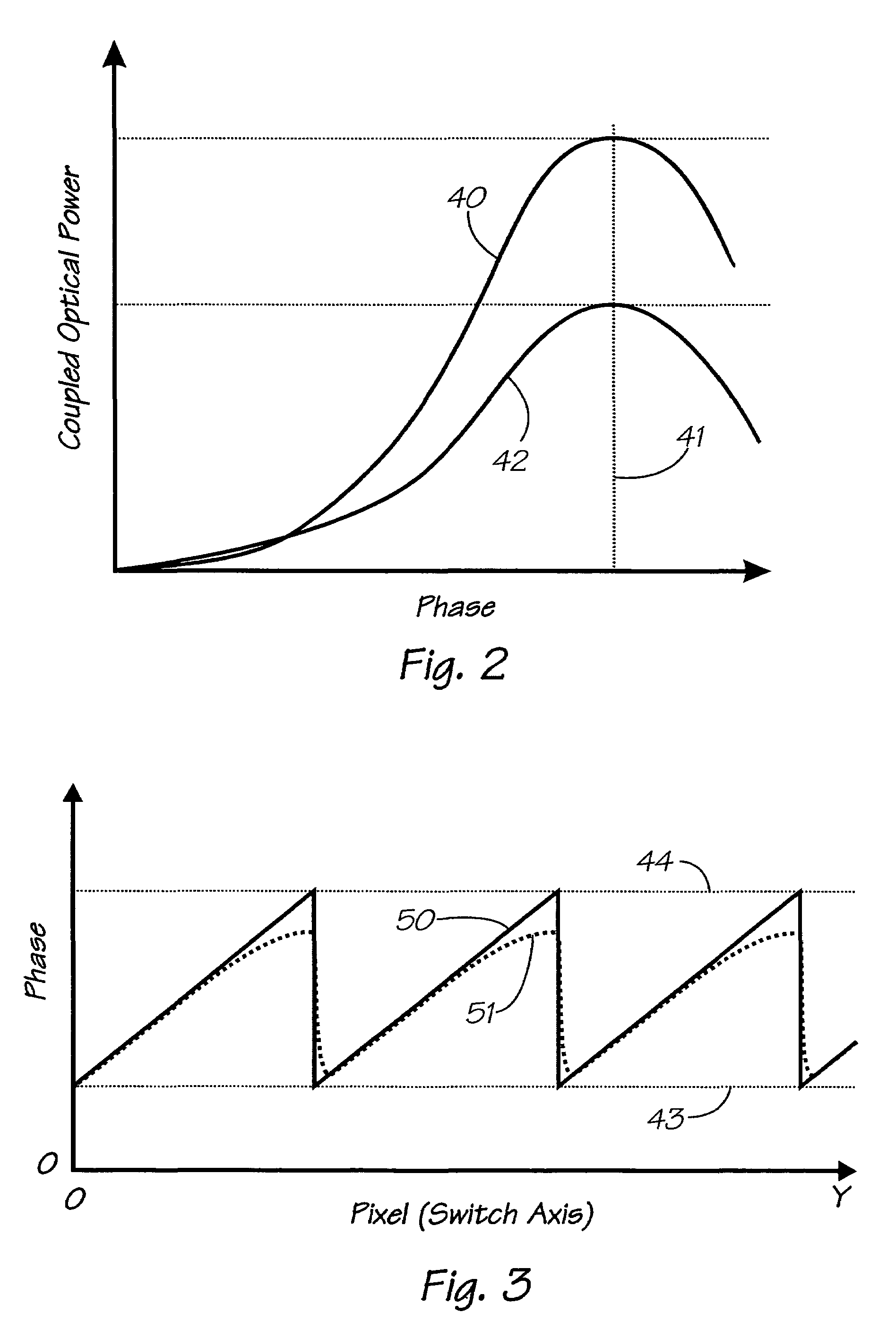Optical calibration system and method
a technology of optical calibration and optical device, applied in the field of optical calibration system and method, can solve the problems of increasing the bandwidth of fiber optic communication network, limiting the functionality of dwdm applications, and increasing the demand for network functionality, so as to reduce the effect of cross-talk
- Summary
- Abstract
- Description
- Claims
- Application Information
AI Technical Summary
Benefits of technology
Problems solved by technology
Method used
Image
Examples
Embodiment Construction
[0109]The preferred embodiment of the current device is a reconfigurable optical wavelength processor for use in telecommunications network applications. The optical processor uses a liquid crystal SLM (preferably a LCoS SLM) as an optical phased-matrix coupling device to couple selected wavelength channels contained in at least one optical input signal to at least one output port. The input and output ports, and the particular wavelength channels coupled between them, are chosen as required for the routing of signals in the telecommunications network. To ensure that the device is adaptable over a range of possible network configurations, the SLM is implemented as a dynamically reconfigurable grid. The individual pixels in the grid each modify the phase (or wavefront) of an incoming input beam in such a way that the beam is directed efficiently to a desired output port.
[0110]A self-calibration technique is described where the calibration of the optical processor is performed after t...
PUM
 Login to View More
Login to View More Abstract
Description
Claims
Application Information
 Login to View More
Login to View More - R&D
- Intellectual Property
- Life Sciences
- Materials
- Tech Scout
- Unparalleled Data Quality
- Higher Quality Content
- 60% Fewer Hallucinations
Browse by: Latest US Patents, China's latest patents, Technical Efficacy Thesaurus, Application Domain, Technology Topic, Popular Technical Reports.
© 2025 PatSnap. All rights reserved.Legal|Privacy policy|Modern Slavery Act Transparency Statement|Sitemap|About US| Contact US: help@patsnap.com



